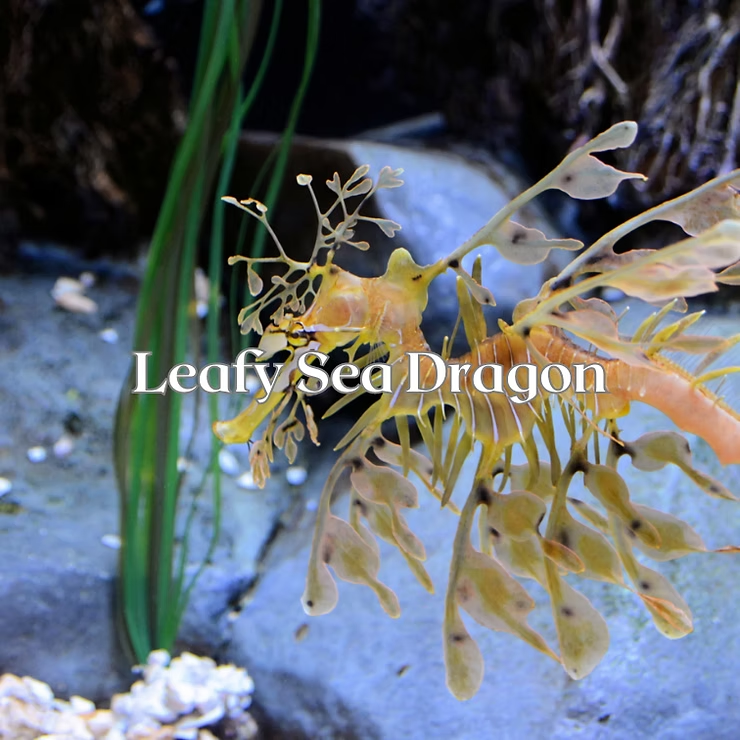The Enchanting Leafy Sea Dragon
The Leafy Sea Dragon is a remarkable marine fish found along the southern and western coasts of Australia. Known for its leaf-like appendages and graceful movements, it belongs to the same family as seahorses and pipefish. Its striking appearance not only makes it one of the ocean’s most fascinating creatures but also provides excellent camouflage among seaweed and kelp beds.
Appearance
Leafy Sea Dragons live up to their name with elaborate appendages that resemble floating seaweed. These are not used for swimming but for blending into their surroundings to evade predators. Their long, slender bodies grow up to 14 inches and are covered in bony plates. With large protruding eyes and a tubular snout for sucking in prey, they are perfectly adapted for stealthy survival.
- Members of the seahorse family, closely related to pipefish
- Masters of disguise, capable of subtle color changes
- Native only to southern Australian waters
Diet
Leafy Sea Dragons primarily feed on small crustaceans such as shrimp, copepods, amphipods, and plankton. Using their long snouts like a vacuum, they suck prey directly into their mouths. Their camouflage makes ambushing prey easier, and their slow metabolism means they can go days without eating.
Reproduction
One of the most fascinating aspects of Leafy Sea Dragons is their unique reproduction process. Unlike most fish, males carry and nurture the eggs:
- After courtship, females deposit up to 250 eggs onto the male’s brood patch under his tail.
- The male oxygenates and protects the eggs for 4–6 weeks until they hatch.
- Once hatched, tiny Leafy Sea Dragons swim away on their own, though survival rates are low.
This form of “male pregnancy” is shared with seahorses and pipefish, highlighting their close evolutionary ties.
Threats and Conservation
Despite their beauty, Leafy Sea Dragons face several threats:
- Habitat loss: Coastal development and pollution damage the seagrass beds and reefs they rely on.
- Fishing pressures: Accidental capture in nets and demand from the aquarium trade reduce populations.
- Low reproductive success: Their slow growth and limited offspring survival make them vulnerable to population declines.
Conservation efforts include creating marine protected areas, restoring habitats, and raising awareness to prevent illegal trade. They are listed as Near Threatened on the IUCN Red List and are legally protected in Australia.
Conclusion
The Leafy Sea Dragon is more than just a beautiful marine creature—it is a symbol of fragile ocean ecosystems. From their extraordinary camouflage to their unique reproductive role reversal, they continue to fascinate divers, scientists, and conservationists. Protecting their habitats and reducing human impacts is essential to ensure these magical creatures thrive for generations to come.
Key Takeaways
- Leafy Sea Dragons are marine fish native to southern Australia.
- Their leaf-like appendages provide camouflage, not propulsion.
- They feed mainly on small crustaceans and plankton.
- Males carry and incubate eggs until hatching.
- Threats include habitat loss, pollution, and illegal trade.

